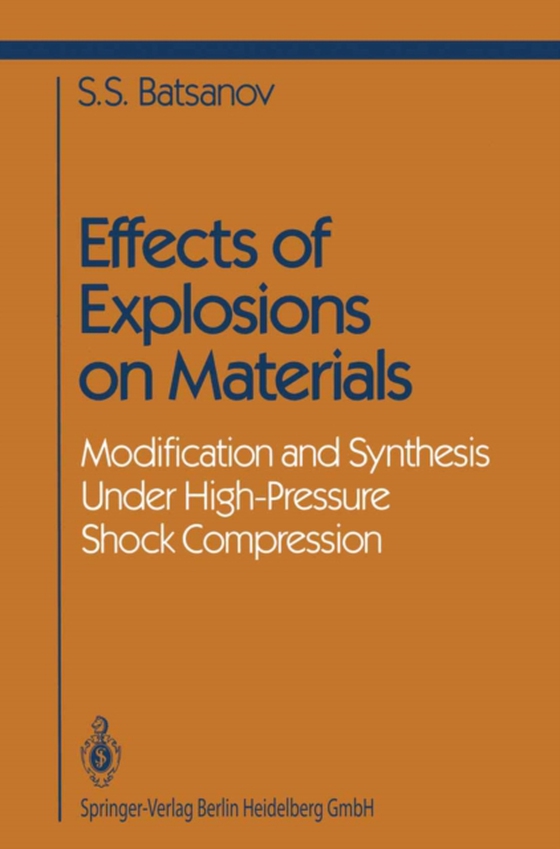
Effects of Explosions on Materials e-bog
875,33 DKK
(inkl. moms 1094,16 DKK)
In the 1950s explosives began to be used to generate ultrahigh pressures in condensed substances in order to modify their properties and structure. Notwithstanding the short duration of an explosion, its energy proved to be high enough to perform physical-chemical transformations of substances, and the new method gained wide industrial applications. It has both advan- tages and drawbacks in com...
E-bog
875,33 DKK
Forlag
Springer
Udgivet
29 juni 2013
Genrer
PHDS
Sprog
English
Format
pdf
Beskyttelse
LCP
ISBN
9781475739695
In the 1950s explosives began to be used to generate ultrahigh pressures in condensed substances in order to modify their properties and structure. Notwithstanding the short duration of an explosion, its energy proved to be high enough to perform physical-chemical transformations of substances, and the new method gained wide industrial applications. It has both advan- tages and drawbacks in comparison with the traditional method of static compression. The latter method, notorious for its cumbersome and expensive machin- ery, allows one to maintain high pressure as long as one pleases and to regu- late the temperature of the sample arbitrarily. But, the pressure available is rather limited and for any increase of this limit one has to pay by the progres- sive shrinking of the working volume of a press. The dynamic method has the advantages of low cost and practically no restrictions of magnitude of pressure and the size of a processed sample, but the temperature in a compressed body is no longer controlled by an experi- mentor. Rather, it is firmly dictated by the level of loading, according to the equation of state. Hence, it is difficult to recover metastable products and impossible to prepare solids with a low concentration of defects as the dura- tion of explosion is too short for their elimination.
 Dansk
Dansk

